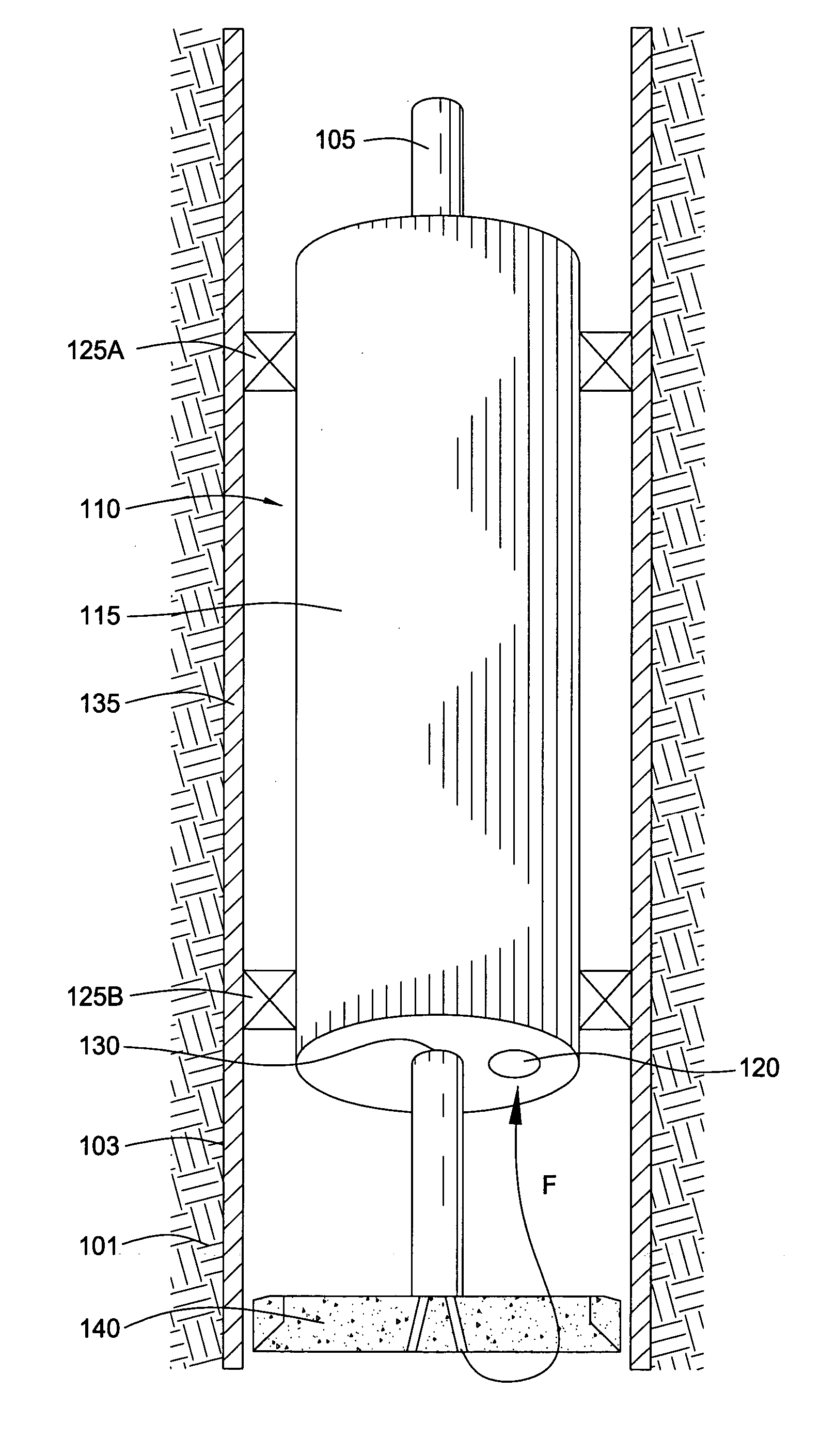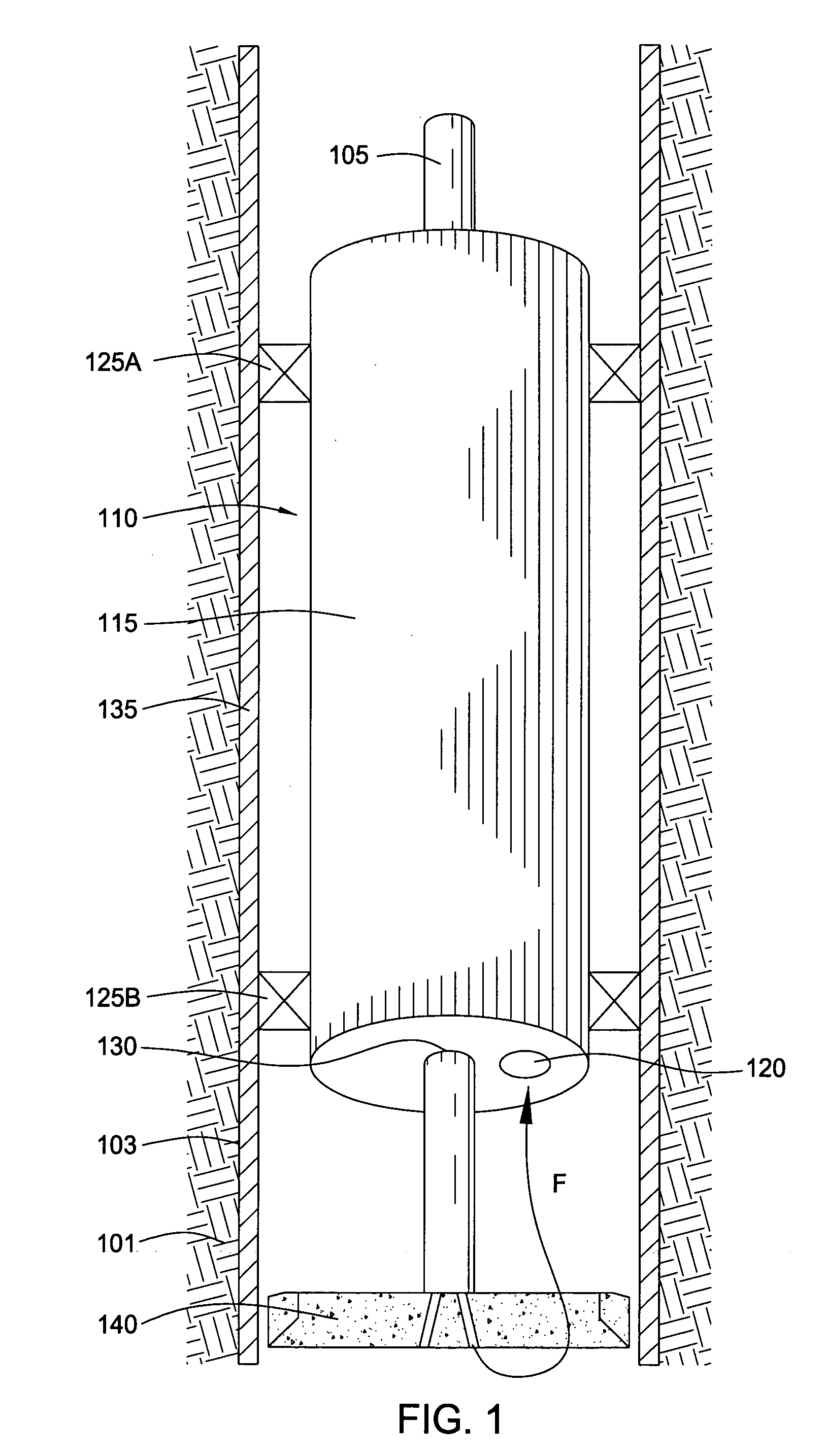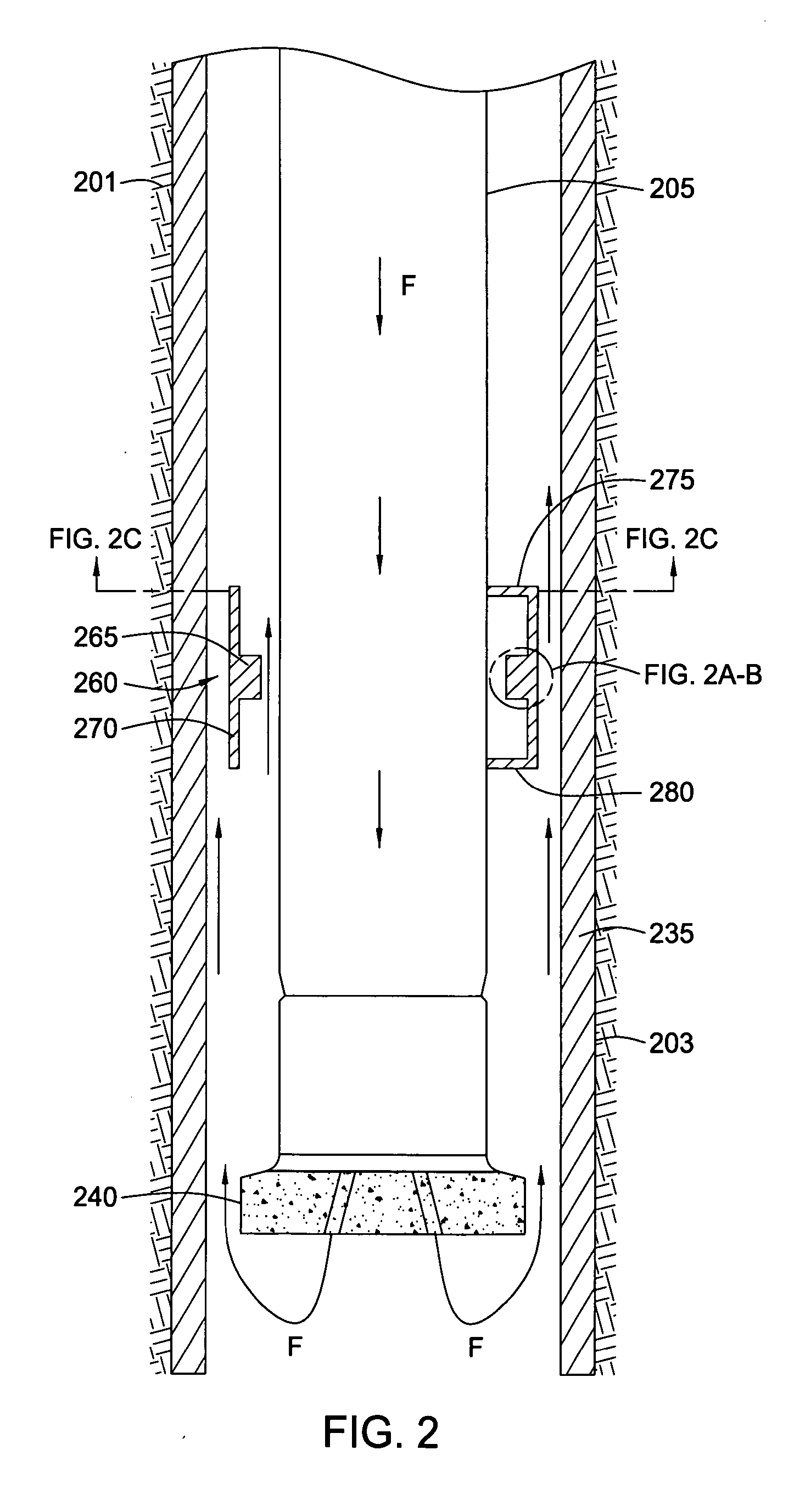Managed pressure drilling
a wellbore and pressure management technology, applied in the direction of drilling pipes, drilling well accessories, drilling holes/well accessories, etc., can solve the problems of loss of production fluid, well underbalance, undesirable blowout or “kick” of production fluid through the wellbore,
- Summary
- Abstract
- Description
- Claims
- Application Information
AI Technical Summary
Benefits of technology
Problems solved by technology
Method used
Image
Examples
Embodiment Construction
[0053] Embodiments of the present invention allow control of fluid pressure throughout the wellbore using various pressure control devices and various drilling fluids. Further, embodiments of the present invention provide sufficient pressure control within the wellbore to allow maintaining a given pressure profile throughout the wellbore. Additionally, embodiments of the present invention provide a closed-loop fluid circulating system for drilling wells in which fluid flow properties may be controlled, tailored as desired, and maintained for fluid flowing into the wellbore, return fluid flowing out of the wellbore, and fluid flowing throughout the entire wellbore.
[0054] In embodiments of the present invention, a downhole choke is utilized to affect fluid pressure within the wellbore. FIGS. 1-3 show embodiments of downhole chokes which reduce the pressure of drilling fluid circulating up through the annulus between the drill string and the wellbore above the downhole chokes, while i...
PUM
 Login to View More
Login to View More Abstract
Description
Claims
Application Information
 Login to View More
Login to View More - R&D
- Intellectual Property
- Life Sciences
- Materials
- Tech Scout
- Unparalleled Data Quality
- Higher Quality Content
- 60% Fewer Hallucinations
Browse by: Latest US Patents, China's latest patents, Technical Efficacy Thesaurus, Application Domain, Technology Topic, Popular Technical Reports.
© 2025 PatSnap. All rights reserved.Legal|Privacy policy|Modern Slavery Act Transparency Statement|Sitemap|About US| Contact US: help@patsnap.com



